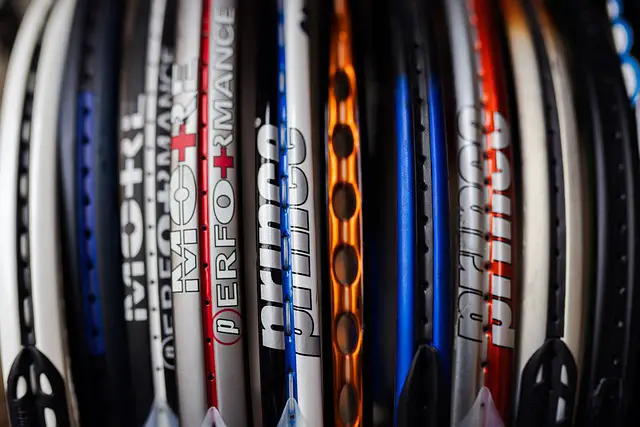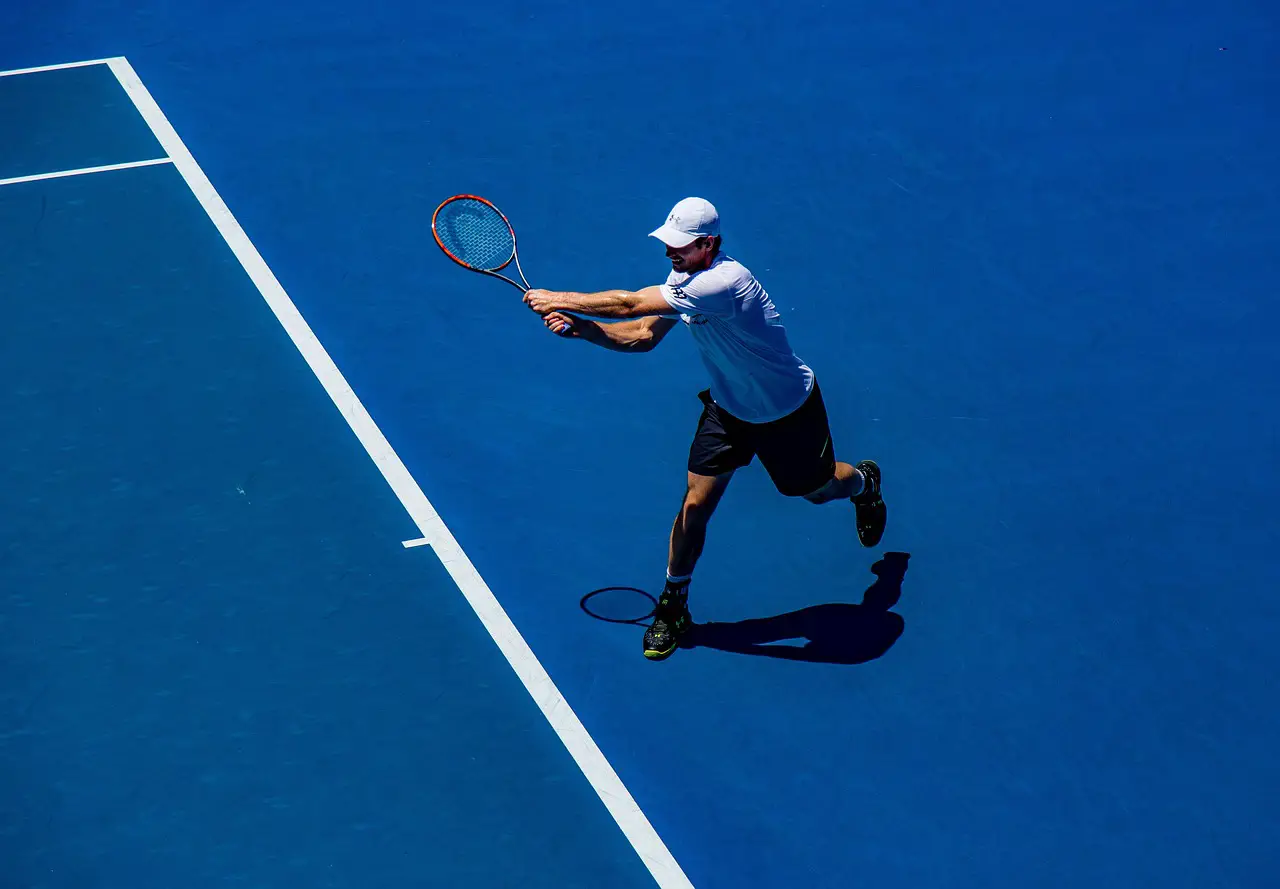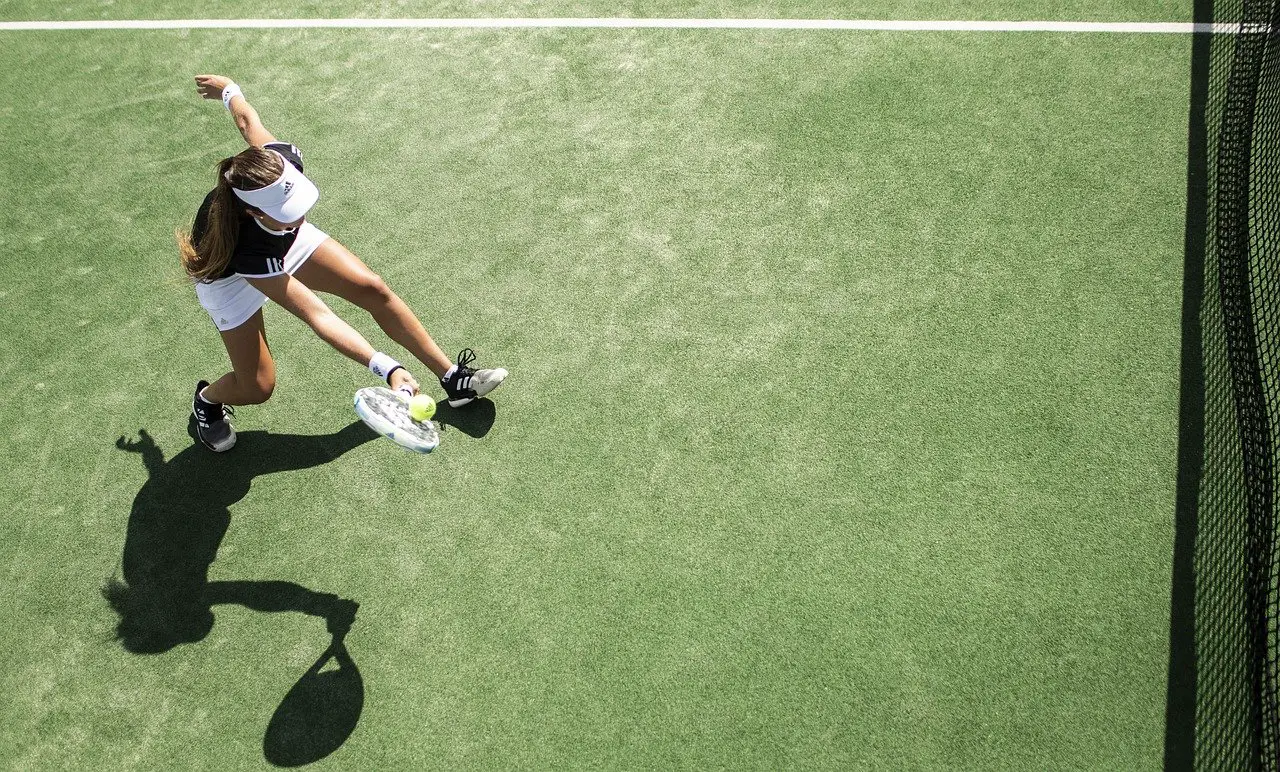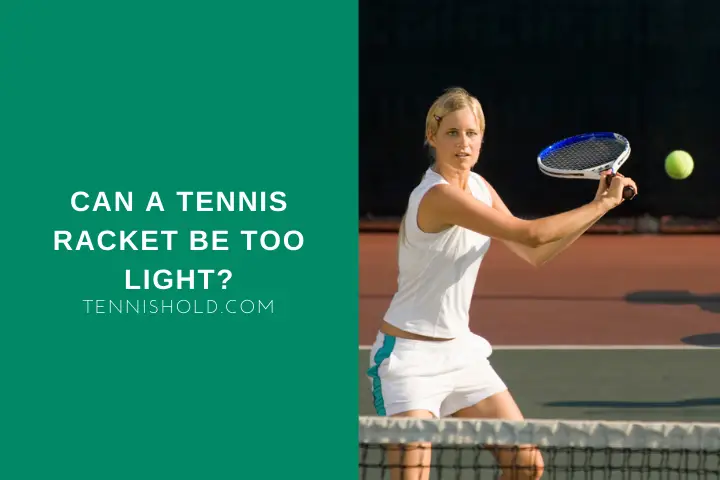If you just start to play tennis, it might be unclear what you should look for in a racket.
Generally speaking, you should look at the racket head size and weight. Do not worry, though, as this is a tricky topic even for more advanced players.
When you transition from junior to adult racket, you will naturally switch to a heavier frame. As your muscular strength and technique increase, you can handle less maneuverable but more powerful frames.
However, be careful and don’t overestimate your abilities as it could be self-defeating.
A tennis racket can be too light to body weight. A lighter racket would transfer many shocks into your arm, while a heavier racket might restrict swing and reaction time.
Let’s be honest; the wrongly selected racket doesn’t allow you to play at an optimal level.
It limits coordination and may even harm your health. For example, if you hit a regular ball hard with a too-light racket, your muscles suffer.
Imagine you want to hit a baseball with a plastic bat. The momentum you create and the ball’s mass are far irrelevant to the bat’s toughness.
I’m all in that you’ll break this bat. But, similarly, in tennis, your racket has to be heavy enough to handle your actual strength combined with the ball impact.
So let’s dig deeper together.
Light vs Heavy Tennis Rackets

Light adult rackets are usually recommended to beginners and physically weaker players. But, junior players who mature quicker than others could find lightweight adult rackets suitable for them too.
Light rackets are easy to swing, giving you an advantage on return and while at the net. In addition, you can move the racket faster, so there is a big chance to hit most balls back.
If you like to approach the net often or play aggressive short-backswing tennis from inside the court, this should be your pick.
Make sure, though, that you speed up your hand to generate decent power. Otherwise, you’ll have problems with placing the ball deep in the court. But, of course, it can’t be done without proper racket stability, which is gained by creating high frame momentum.
This is why advanced players and professionals choose medium or heavy rackets. They provide them with comfort and confidence in fast rallies.
Compared to light rackets strung with the same tension, heavy rackets produce more power that reduces the impact on the arm.
The thing is, when you return, you don’t really need to hit the ball hard to make it powerful. The ball is already coming fast enough, so you just use its energy. You may block the ball, add some spin, or strike it back with the shortened backswing.
However, because the heavy racket is relatively stable and solid, it requires a strong arm to swing. Unfortunately, young inexperienced players often don’t realize that and have difficulties with reacting on time.
Just for your summary here is a little table with key differences.
| Heavy Racket | Light Racket |
|---|---|
| More Power | Less Power |
| More Stability | Less Stability |
| Less Maneuverability | More Maneuverability |
| Less Control | More Control |
| Slower Swing | Quicker Swing |
How Do I Know That My Tennis Racket Is Too Light?

You need to analyze your game first, to figure whether the racket is too low.
Every error you make is often a result of poor technique. So, the root cause of your inability to perform strokes properly can be a racket weight.
Let’s say you swing the racket nicely and put all your strength into producing powerful shots.
However, balls keep landing near the service line no matter how hard you try. This might be a reason to use a heavier racket for correcting shot depth.
Have you noticed that you often hit a ball with your racket frame?
A light racket accelerates much faster at the swing. Because of this, the contact with the ball happens too early, so the effective hitting spot is then significantly narrowed.
Here is another example.
You lose the grip on the impact, and the racket shakes all the time.
When the racket shakes in your hand, it means that the handhold is not solid.
Here is the bad news. There is no way you’re able to control the ball with this racket. Hence you are constantly making mistakes.
Not to mention that your arm gets additional unnecessary overloading.
The most important thing I want you to get out of this article is that your playing style will determine which type of racket would be more suitable for you to succeed in tennis.
Players who rely on big serves can’t be successful with light rackets. Heavy rackets help them create forceful momentum to transfer the energy on the ball.
The lever effect is then reinforced by moving weight balance towards the racket head.
Without the racket weight contribution, generating the same power with a pure muscular motion in a stroke is impossible.
Juan Carlos Del Potro and Reilly Opelka, known for hammer forehands, would never be top-ranked if they used light rackets in their careers.
Once you decide to play with a heavier racket, you need to take into account that you will have less control over it.
It means your spin rate will slightly go down, which could be destructive at first. As you develop your game you will balance that out with your technique.
What Should Be The Ideal Tennis Racket Weight?

The truth is, the ideal tennis racket weight doesn’t exist.
It’s always about an individual adjustment. The racket weight has to match your playing style, overall strength, and coordination abilities.
You should test many rackets with different parameters to find perfectly balanced characteristics.
For example, I perform the best with medium-weight head-light rackets. But before I found my favorite one, it took me more than 10 models of various brands to test.
If you’re a talented teenager with a short backswing and a tendency to hit lots of volleys, your racket of choice should be lighter. This should allow you to win many matches without much effort.
But, your doubles partner might not have developed decent strength yet, so he will need a heavier racket to hit harder and deeper balls.
Not only your tennis level or technique but also age determines the racket weight you need.
It is so because when you get older, your body can handle less weight.
Final Words
A proper racket weight selection can be really confusing and problematic. If you make a mistake at it, your performance won’t be as satisfying as you wish.
The right racket in every way is the one that doesn’t interfere with technique and enhances your strengths.
I doubt that you will use the same racket over your entire life as you, tennis, and equipment evolve.
But I suppose you’ll enjoy light rackets the most in your youth and older age. Meanwhile, take advantage of heavy rackets’ features in the prime of your life.
Did you use both light and heavy adult rackets?
If you have never tried to play with a heavy racket, would you like to experience the difference?

